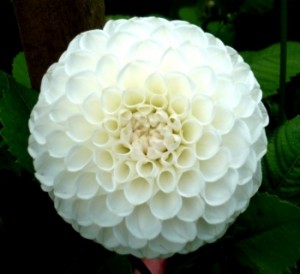Dahlia History and the Blue Dahlias
Wish List
Today’s hybridisers are still seeking the true blue Dahlia. We would also like one with a scent and if it was frost hardy that would be a triple bonus but then again it may not be a Dahlia at all. If you want to name a variety you have selected and grown yourself the National Dahlia Society publish the rules for naming and the register of existing names is maintained by the RHS.
Dahlias a History
The National Dahlia Society publish a history of the Dahlia from which the excerpts below have been taken

There is also an Encyclopedia of Dahlias see below
‘The Genus Dahlia is native of Central America, principally in the high plains of Mexico also some species can be found in Guatemala, Honduras, Nicaragua, El Salvador & Costa Rica as well as parts of South America and at present there are 35 recognised species in existence. Botanically the Dahlia belongs to the family Compositae (Asteraceae) and was given the Genus name “GEORGINA” in error in 1803, a name by which it is still known in many eastern parts of Europe.
The Dahlia has been in Europe for over two hundred years. It came from Mexico to the Botanical Gardens in Madrid towards the end of the eighteenth century and was named by Abbe Cavanille in honour of Andreas Dahl, Swedish scientist come environmentalist.. By the time Dahlias were imported into Britain they were alreadt hybrids of Dahlia pinnata, Dahlia rosea and Dahlia coccinea. The first dahlias grown out side of Madrid were single (open-centred) & Multi-ray open centre flowered, but it was not long before the horticultural growers of the day discovered the Dahlia was a natural hybrid and when grown from seed, it readily changed its form and colour, so that today we have a range of Dahlia types that offer something to please everyone. The Victorians particularly revelled in showing these ‘new’ flowers.
The first double flowered cultivars were called Show and Fancy types. The Show were self-coloured, ball like flowers, while the Fancy ones were multi-coloured. During the mid 1800’s, these show and fancy flowers attained cult status with gardeners, and several thousand different cultivars were recorded. Other forms followed, in 1829 the first Anenome flowered dahlia appeared and then in 1850 the first Pompon were raised in Germany, and was named after the bobble on a French Sailor’s hat. The origin of the Cactus & Decorative type belongs to the arrival of “Juarrezii†according to the written records it was imported as a piece of tuber from Mexico in 1872 to Holland. M.Van de Berg of Uttrecht who had received this cultivar from Mexico and released stock in 1874. Collerettes are the form of dahlia raised in France that are due to sporting of Dahlias at Jardin Botanique de Lyon at the end of the 19th century.
Today, there are cultivars in the form of the waterlily, paeony, orchid, chrysanthemum and the anemone, to say nothing of the main formations like the decorative (flat, broad petals), the cactus and semi-cactus types (rolled, pointed petals) and the ball forms (globular flowers) that have as their smallest relative the popular Pompon Dahlias that beguile so many gardeners.
There is every colour and colour combination to choose from, except the elusive blue which is covered by the wide range of violet and mauve cultivars. Sizes range from the smallest types, called Topmix or Lilliput Dahlias to the giants that have blooms over a foot in diameter carried on powerful stems.’
The national collection in Cornwall
The RHS plant trial in 2004 awarded AGM to several new varieties – read the full report
Bishops Children from Gardeners Tips
Note
Dark leaved Bishop’s children Dahlias are looking very good as Autumn comes to an end. Children will be surprised the leaves are not green and the flowers remain so colourful read more

3 thoughts on “Dahlia History and the Blue Dahlias”
Dear Sirs,
I belong to small allotment society and want to show my dahlias and wondered what category a waterlily dahlia can be show in please? At the moment the society only has decorative and pompom varieties.
Many Thanks ~ June Hall
Group 4 is the classification for Waterlily Dahlias. Group 10 is miscellaneous forms but you could encourage your society to have an open category that would have any group including cactus,, collerette and your waterlily types.
Comments are closed.